If you have a dog who is reactive, fearful, or otherwise not good with other dogs, then an off leash dog running at you and your dog is probably your worst nightmare. Having a plan to deal with it can make any off-leash dog encounters safer for you and your dog and help you feel more confident taking your dog out.
This is a tough situation with a lot of variables, so I created a 2-post series to help you be as prepared as possible.
-
This post, part one, covers how to stop the dog from reaching your dog.
-
Part Two covers what to do if you can’t stop the other dog from reaching your dog.
A QUICK DISCLAIMER
Please bear in mind that this is my opinion, based on my education and experiences. There is no way to know exactly how these situations will unfold or to guarantee a positive outcome, so consider if this advice seems right for you and your dog and act carefully.
AN OFF LEASH DOG IS RUNNING AT YOU.
You can categorize the situation you are in one of two ways to figure out which options will be best for you. The key difference is whether or not the dog is under someone’s control or not.
SCENARIO A: THE OTHER DOG IS UNDER CONTROL OF A HANDLER.
If there is a handler, and they are close enough to hear you, you can use verbal and visual communication to ask them to leash their dog.
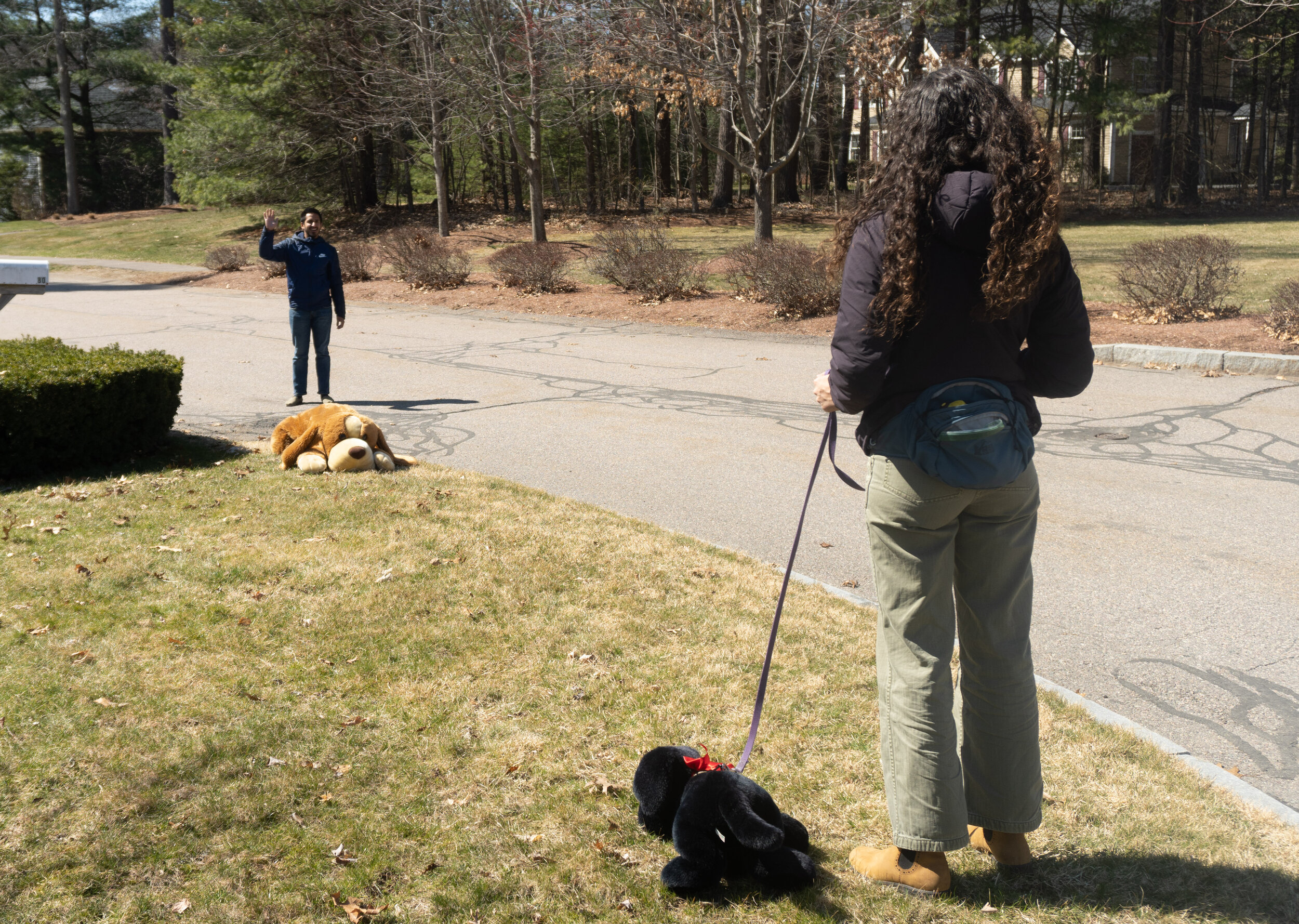
-
Tell a white lie to get them to leash their dog. Ever asked someone to leash their dog and received the reply, “It’s ok! He’s friendly!” We’ve all been there. For whatever reason, people take what you say about your own dog not wanting to socialize and turn it around and make it about their dog.
You can side step all of that by saying “Can you please leash your dog? My dog has kennel cough.” Everyone knows that kennel cough is highly contagious, but they shouldn’t get too mad at you, because even sick dogs need to go potty and stretch their legs.
Kona recently had stitches under her chin, and telling people “Can you leash your dog? Mine has stitches on her face.” got us speedy, reliable results, so feel free to borrow that one.
Generally, the bigger and more traditionally “scary” your dog looks, the better responses you will get. Sorry little nuggets!
-
Use visual cues to communicate that your dog needs space. You may also try using a yellow leash or harness or tying a yellow ribbon or bandana to your leash. The Yellow Dog Project is trying to build awareness that these symbols mean that a dog needs space. I have seen this catch on in some communities, so it could be helpful. I have also seen techniques like this backfire because the cue to stay away turns into a conversation starter.
SCENARIO B: THE OTHER DOG IS OUT OF CONTROL.
Maybe the dog is alone or way ahead of their handler. Maybe the handler is there, but they aren’t calling the dog or the dog isn’t responding to them. Maybe you’re on a trail with poor visibility and neither you nor the other handler have time to do much of anything. Whatever the reason, things just got more complicated.
Below are a variety of strategies for you to consider. They are listed in order of preference based on what will be least invasive or aversive for the both dogs. Anything aversive that you do to scare away the other dog is likely to also scare your dog, so we really want to minimize that.
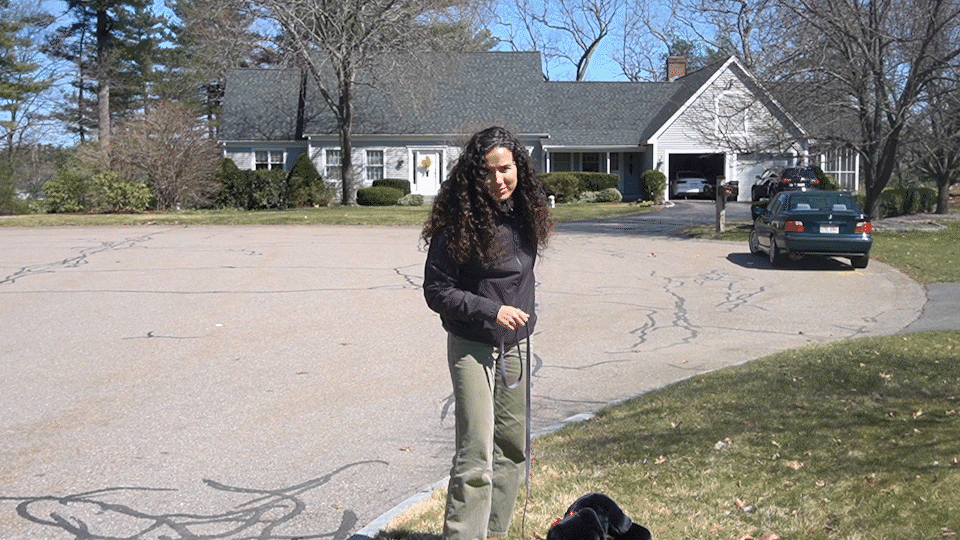
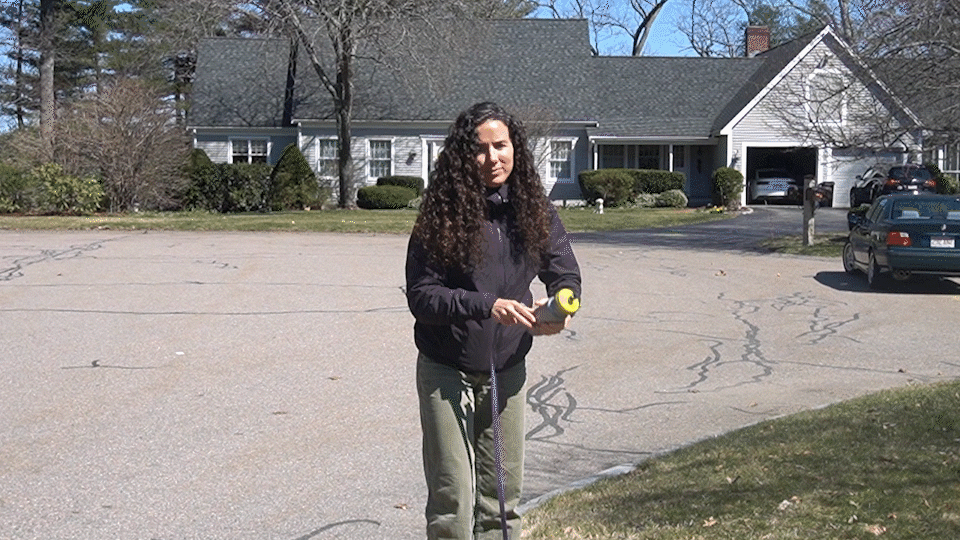
-
Look for a barrier to put between your dog and the oncoming dog. - You can hop into someone’s fenced yard, into a trailhead restroom, into your car, etc. to escape the dog. This is rarely a feasible option, but it is the safest for everybody if it’s available.
-
Distract the other dog with treats while you make a getaway. - This only works if the other dog is relatively chill and more interested in treats than you or your dog. So, it’s worth a shot if the dog is approaching with loose, casual body language. Throw a bunch of treats at them or on the ground, and scurry away. This only works if the handler can catch up and leash the dog quickly or if you have a barrier to get behind. Because as soon as that dog finishes the treats on the ground, you better bet they will come find you for more.
-
Use water to keep the dog away. - If the dog’s body language is more intense or you don’t have a good getaway plan, this should be your first strategy. You can use a squeeze water bottle like an old school bike bottle to spray water in an arc between you and the dog. If they keep approaching, aim the stream straight at their face. The handler may put up a stink, once they finally get to you. But it’s just water, they can’t get too upset.
-
Use citronella spray to deter the dog. - We’re getting deeper into aversive territory here, and this strategy could have negative effects on your dog as well, so this is only for more serious situations. I recommend it if your dog has a history of injurious fights, whether that means that they inflicted physical damage on another dog or received lasting physical or psychological damage. There may be other scenarios that justify its use as well, like grab-and-shake risks, or sick, injured, or elderly dogs.
You would use it just like water, spray it in an arc between you and your dog and the oncoming dog or directly in that dog’s face if needed. It’s more intense than water, so the other handler will almost definitely be upset, but you still aren’t causing physical damage or pain.
We won’t delve into this in this post, but if your dog has injured another dog before, they should probably wear a muzzle when they are off your property. It’s a much more reliable strategy to prevent an incident than citronella spray is. Dogs tend to be consistent with how much bite force they use, so a dog who has caused injury when biting before is likely to cause injuries if they bite again.
-
Don’t try to use your body as a barrier. - I do not recommend putting yourself between the two dogs, even if you’ve trained your dog to tuck behind you or go between your legs on cue. You are at high risk of getting bitten by either dog in this situation. In addition to the risk that the other dog bites you because they feel threatened, you could receive a redirected bite from either dog.
A redirected bite is when a frustrated, worried, or otherwise overwhelmed dog bites whatever is nearby. It’s an unconscious release of emotion, similar to a human punching a wall. Redirected bites tend to be harder bites that cause more damage and are just as likely to happen to friends or family as strangers. In addition to the risk to you, which you might be fine with, the consequences for a dog who bites a human are severe. Most dog bites are worse for the dog who bites than the person who is bitten. Medical professionals are obligated to report bites, so you won’t be able to shield your dog if you need to seek care.
ONE MORE CONSIDERATION: DO YOU HAVE A TEAMMATE?
If you have someone else with you, you can both take on different roles to increase your chances of successfully avoiding an interaction. One person can retreat with the dog, while the other uses similar options to those listed above to deal with the dog.
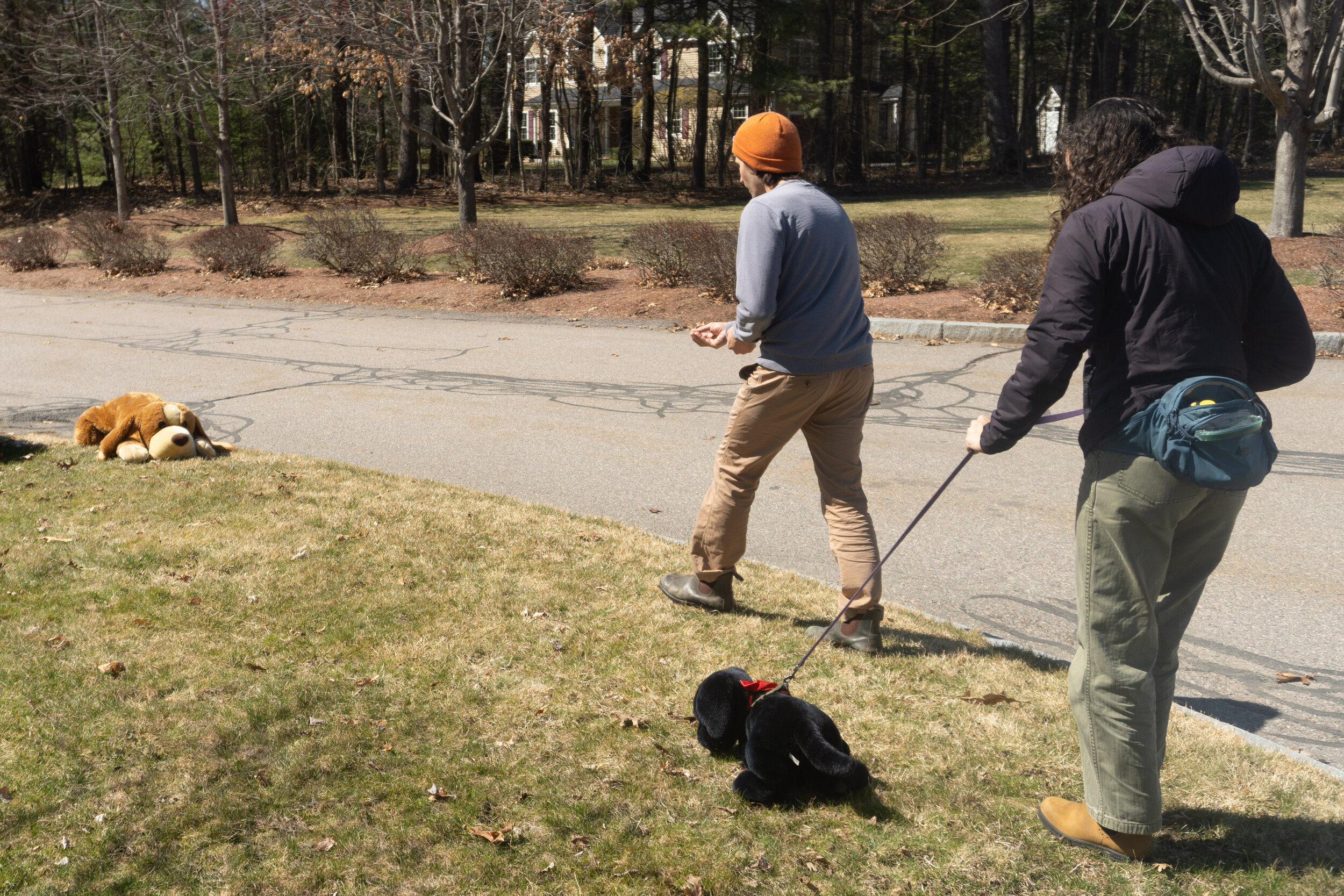
Here is how the advance party can deal with the incoming dog. These are listed in my order of preference based on what will be most successful and least risky for everyone involved.
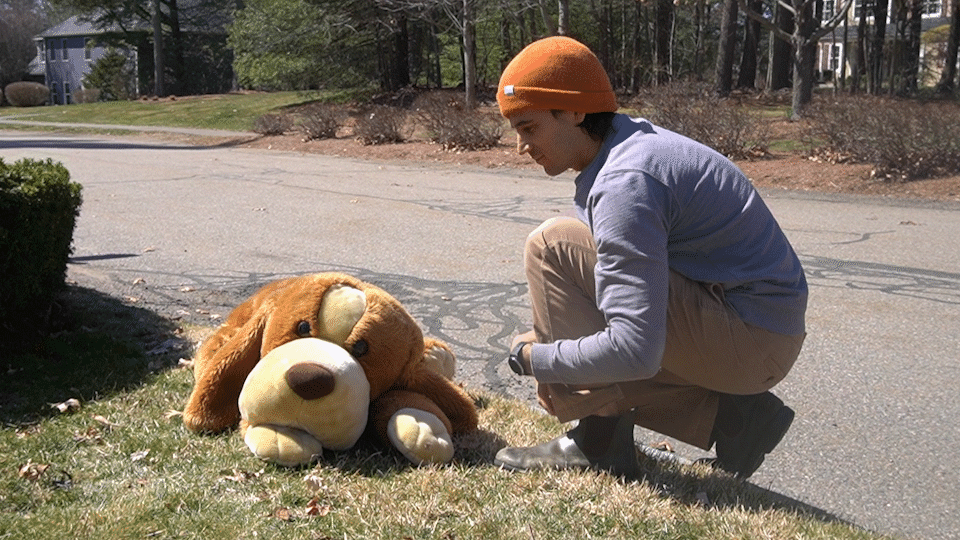
-
Speak to the other handler. If there is an owner and the dog is still far enough away, ask them to leash their dog. Either be concise and firm without yelling or use one of the white lies from above. The fact that you are advancing while someone else retreats with your dog should make things clear for the other handler and make it easier for you to convince them to leash their dog.
-
Tempt the dog to come to you instead. If the other dog has loose, bouncy body language, see if you can redirect their focus onto you with a playful voice, inviting body language (kneel or bend over, arms wide, slightly angled from them so you aren’t head on), and treats. If this works, you may be able to gently grab the dog’s collar by reaching up from under their chin, not by grabbing from above.
-
Create a water or citronella barrier. If the other dog is coming in hot, whether in a prosocial way, a potentially aggressive way, or something in between, serve as a barrier for your dog by spraying water or citronella spray. Do not try to tackle, grab, box out, or physically intimidate the other dog.
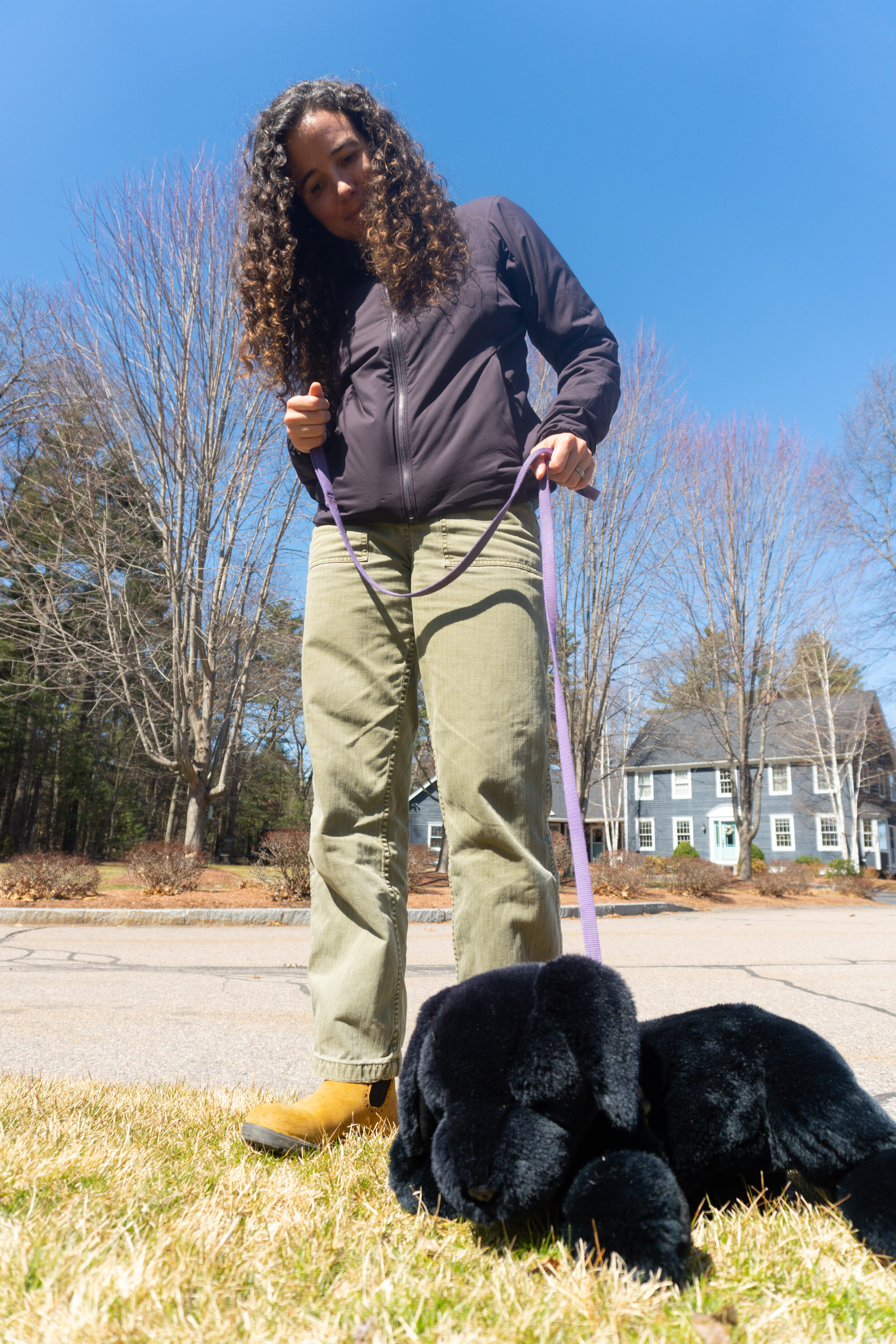
If you are the person retreating with your dog, you want to manage your behavior so the dog is not intrigued by you and your dog anymore than they already are.
-
Walk, don’t run. Running often triggers other dogs to chase.
-
Talk sweetly but softly to your dog. You want to soothe your dog and encourage them to follow you without piquing the interest of the other dog.
-
Don’t drag your dog, if you can avoid it. Try to use playful body language and speech to encourage your dog to come with you without being pulled along, which increases their stress. But, if you need to get space and they aren’t following willingly, you may have to pull.
-
Wait to give your dog treats. I like to avoid giving treats until the off leash dog is contained, but there could be situations where the benefits outweigh the risks.
NOW WHAT?
Hopefully, you’ll be able to deter the other dog and avoid an interaction. Once things are safe again, give your dog lots of treats and chances to sniff, run, chew or play, whatever helps them decompress. And don’t forget to do the same for yourself! You’ll deserve your own treats and decompression time.
You may not always be able to deter the other dog, so check out Part Two for how to best manage an interaction if it happens.
RESOURCES
-
You can learn more about The Yellow Dog Project on their website or from this handout.
-
If you think your dog should be muzzled on walks, this training plan from the Muzzle Up! Project can help you get started.

